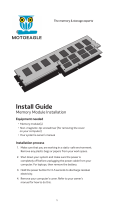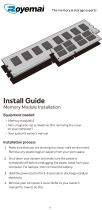
Rear I/O panel .................................................................................................................................... 22
VESA plate cover ............................................................................................................................... 23
Opening the top access door ............................................................................................................. 24
Routing cables to external devices ..................................................................................................... 25
Using the USB security cover ............................................................................................................. 26
Monitor panel (Associate-Facing Display (AFD)) ............................................................................... 28
Installing an optional HP Retail RP7 10.4” customer display ............................................................. 30
Installing an optional HP Retail RP7 VFD customer display .............................................................. 35
Cable management ............................................................................................................................ 40
Memory .............................................................................................................................................. 41
DDR3-SDRAM SODIMM ................................................................................................... 41
Installing SODIMMs ........................................................................................................... 42
Battery ................................................................................................................................................ 44
Optional integrated USB modules ...................................................................................................... 45
Hard drive ........................................................................................................................................... 49
Removing the display head from the stand ........................................................................................ 52
Display head back panel .................................................................................................................... 53
Drive cables and drive cage ............................................................................................................... 55
Hard drive LED cable ......................................................................................................................... 57
Speaker .............................................................................................................................................. 59
USB+PWR 24V and Cash drawer port daughter card ....................................................................... 60
WLAN module .................................................................................................................................... 61
Heat sink ............................................................................................................................................ 63
System board ..................................................................................................................................... 64
Antennas ............................................................................................................................................ 66
Appendix A Computer Setup (F10) Utility ..................................................................................................... 69
Computer Setup (F10) Utilities ........................................................................................................... 69
Using Computer Setup (F10) utilities ................................................................................. 70
Computer Setup—File ....................................................................................................... 71
Computer Setup—Storage ................................................................................................ 72
Computer Setup—Security ................................................................................................ 73
Computer Setup—Power ................................................................................................... 77
Computer Setup—Advanced ............................................................................................. 78
Recovering the configuration settings ................................................................................................ 80
Appendix B Using HP PC Hardware Diagnostics ......................................................................................... 81
Why run HP PC Hardware Diagnostics - UEFI .................................................................................. 81
How to access and run HP PC Hardware Diagnostics ....................................................................... 81
Downloading HP PC Hardware Diagnostics to a USB device ............................................................ 82
vi






















